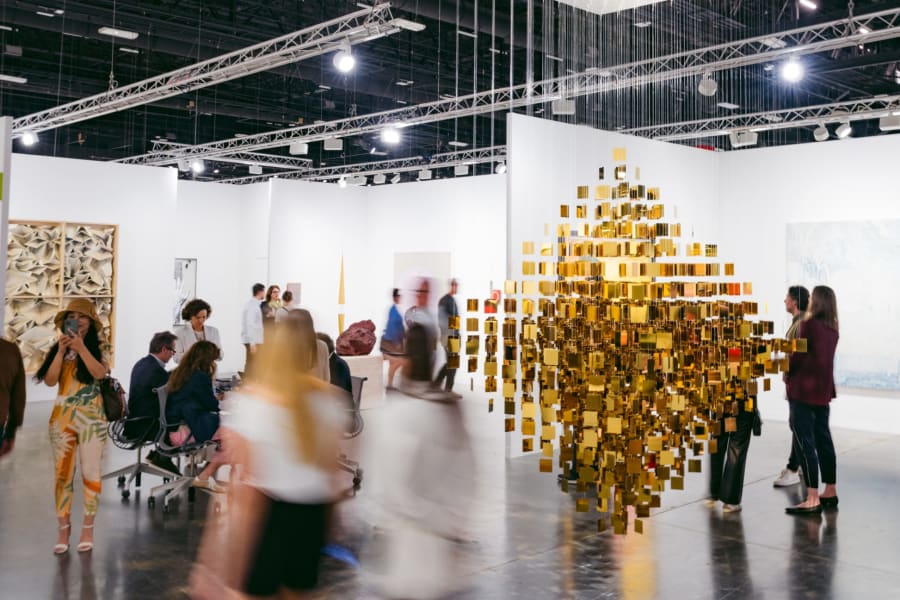Yatreda (ያጥሬዳ) is an Ethiopian art collective led by creative director, Kiya Tadele, known for merging traditional craftsmanship with digital practice. Building handmade sets and costumes, Yatreda reinterprets historical figures, cultural knowledge, and myth through a distinctly Ethiopian lens, preserving these filmed motion pictures permanently on the blockchain. In so doing, the collective challenges inherited narratives while expanding how African art enters global discourse.
Yatreda is an ever-growing, Ethiopian-based art collective, with many members from your own family. How do you go about defining roles?
Growing up, my siblings were always talented - painting and journaling - but I was the curious one, the eldest daughter, and it became my role to organize. We each have our strengths. I bring the artistic vision and the endless ideas. My job is to make everyone as excited about them as I am. If I don’t believe in something with my full heart, who will?
Your early film work went viral in 2021. How do you feel about people encountering it first on their phones and social platforms?
I love my work in museums—people spend time and learn about the art there—but I also believe in sharing widely. It wouldn’t be wise to lock the work in one place. People move fast, so I want the work to meet them where they are.
Your slow-moving, motion portraits often carry a ceremonial, reverent tone. What emotions are you trying to convey in the work?
It depends on the artwork, but the atmosphere tends to be calm, nostalgic, and rooted in pride. Anything I create comes from showing the beautiful parts of our culture. I don’t want to share stress or negativity.
Why nostalgia?
Nostalgia comes from memory. When something is no longer with you, it becomes more powerful. I travelled a lot these past years and felt homesick, but when I thought about home, what I held onto wasn’t the reality—it was the memory. Something ungraspable that gives you hope.
With your use of advanced digital tools and traditional, handmade materials, your NFT work has a timelessness, poised between ancient and modern. Is that contrast integral to the work?
Yes, and when I began making art, I just drew on the talents around me, bringing different craftspeople together. I always document our handmade processes to erase the idea that not having things can stop us. So when a collector or museum acquires an artwork, they acquire every step of the way—not just the final recording. So that continuity will carry into the next generation.
How does your identity as an Ethiopian shape the way you tell stories?
Sometimes audiences expect a certain narrative or a sense of victimhood from African artists. But Ethiopia was never colonised, so our worldview is different. We’re not positioning ourselves in reaction to Western culture. The story of Ethiopian artists extends far beyond what appears in museums, and my work continues that. I'm telling my own stories, guided by my life, and naturally that fills gaps in how people understand our place in the world.
In your work Andromeda of Aethiopia (2022), you return the legend’s heroine to her original context as an Ethiopian empress—a detail often erased in Western retellings. Why was that important?
When people read a legend, they imagine it through the faces around them. Oral history evolves this way. So when European artists painted Perseus Freeing Andromeda, it made sense for their time. But I find it powerful to return to what early writers and tradition intended. Yatreda becomes one version of that truth—drawing from many sources, while still having the freedom to create my own.
Myths evolve, but when you mint a work on the blockchain, it becomes fixed. How do you navigate the shift from fluid oral history to permanent digital record?
This is a big topic in my family. To me, expressing collective memory through theatre, immersive experiences, and photographic visuals is actually closer to oral history than a fixed record. Art reflects a person in a specific time, so in a way, we’re adding new branches.
The Toledo Museum’s acquisition of Abyssinian Queen was the first time a US institution purchased an artwork fully on-chain. Did it feel momentous at the time?
Yes, and we worked hard to make it their first—knowing it wouldn’t be their last. And because the work is decentralised, it’s more resilient to being lost over time.
Your latest work Twenty-First Century Akodama will be shown at ZERO-10 for Art Basel Miami Beach. What’s the idea behind it?
It’s a work about self-sacrifice, connecting the physical and the digital. It features a handcrafted silver crown inspired by those worn by Ethiopian chiefs and warriors, made with Asprey Studio, paired with a blockchain-minted, first-person film—a digital ‘soul’ capturing a warrior’s final memory before going to battle.
Does the work respond to our current time of political instability?
Well, it reflects a worldview where dignity comes from protecting your community, your family and even your country. But it also shows how traditional forms and digital expression can sit naturally together—without changing anything for an Art Basel audience—just inviting people into our universe of integrity and resilience.
Duncan Ballantyne-Way is a writer, editor, and art critic based in Berlin.
Art Basel Miami Beach runs December 5 – 7, 2025. Discover all galleries participating in Art Basel Miami Beach's 2025 here.
Caption for header image: Yatreda ያጥሬዳ, Abyssinian Queen, 2024. Courtesy of the artist.
Published on November 28, 2025.


